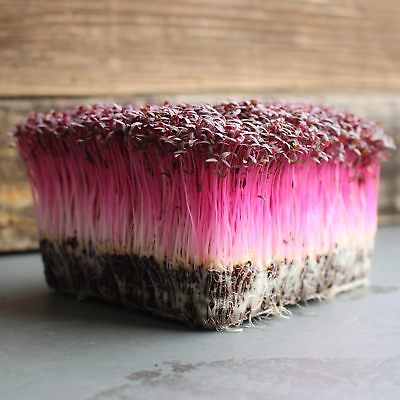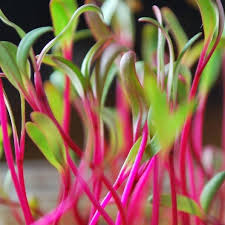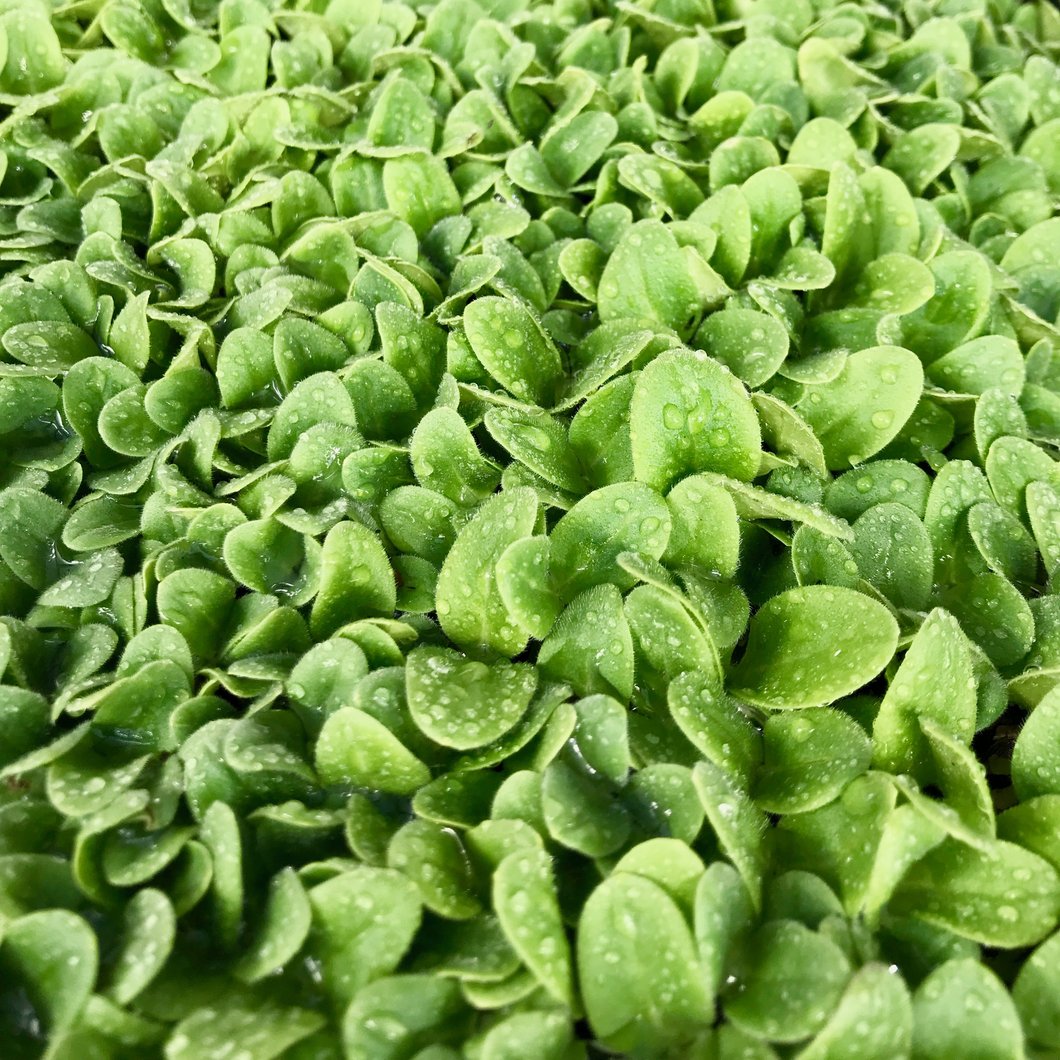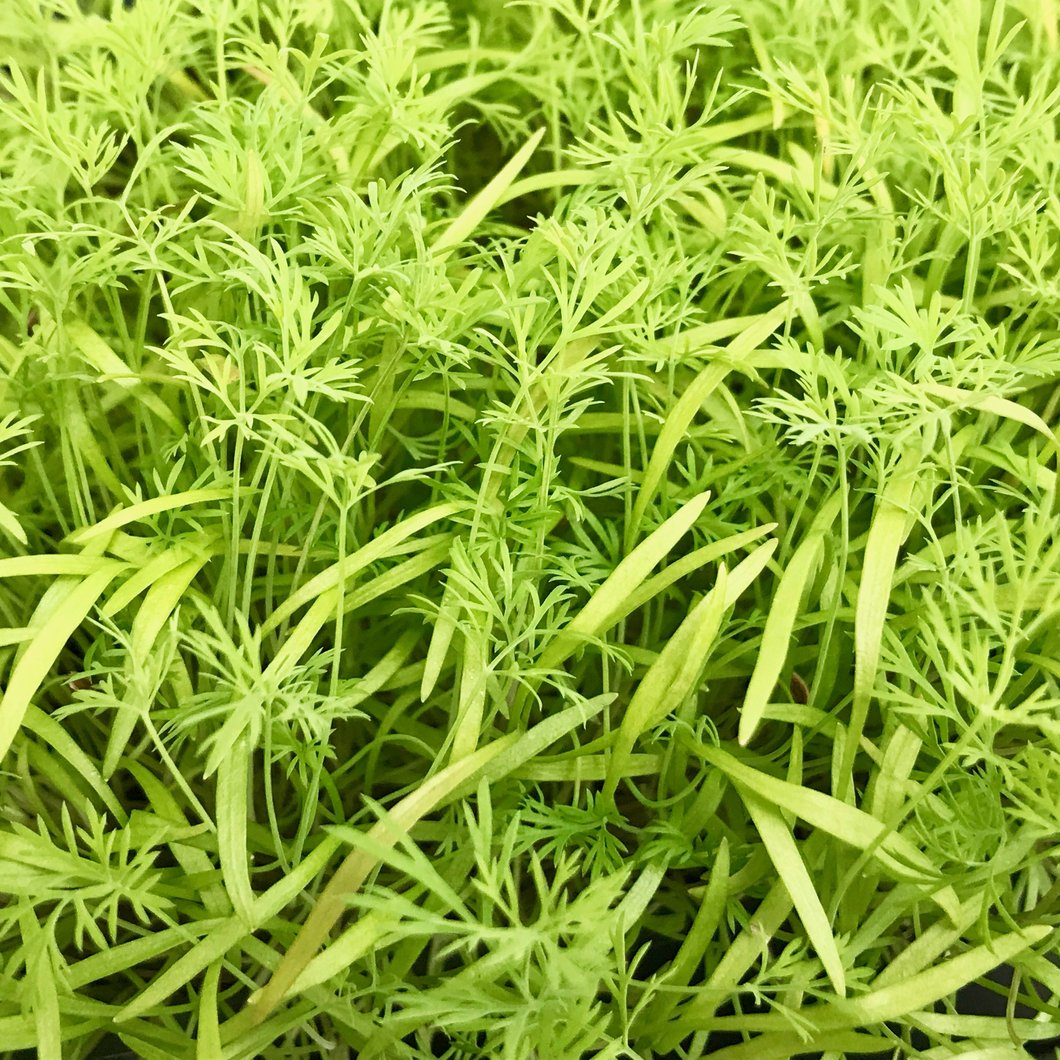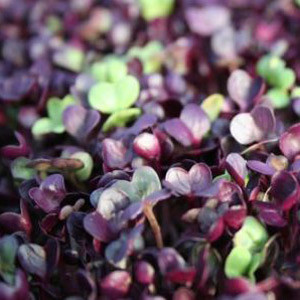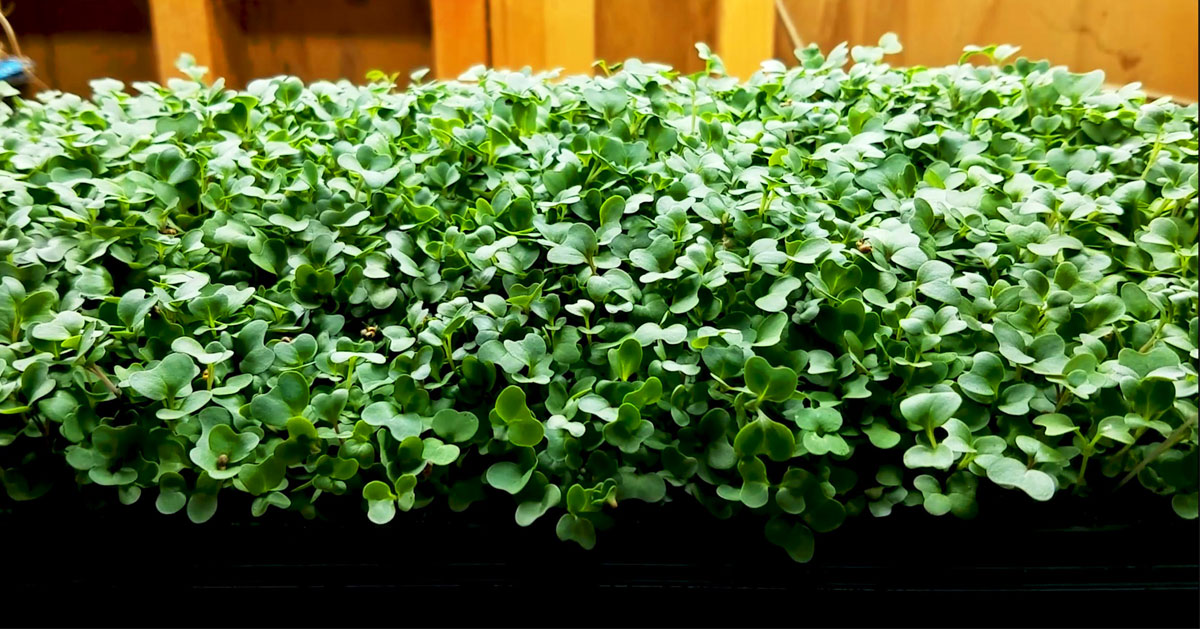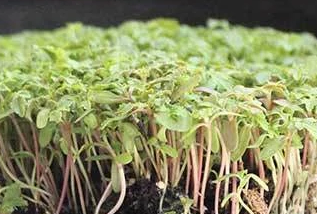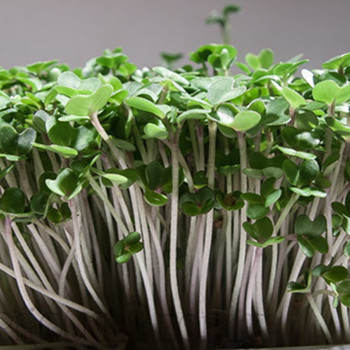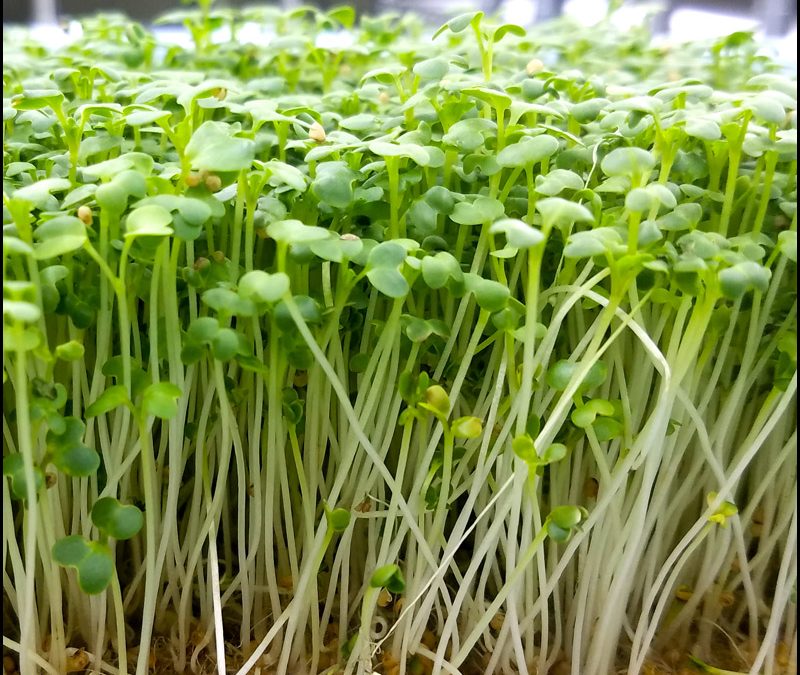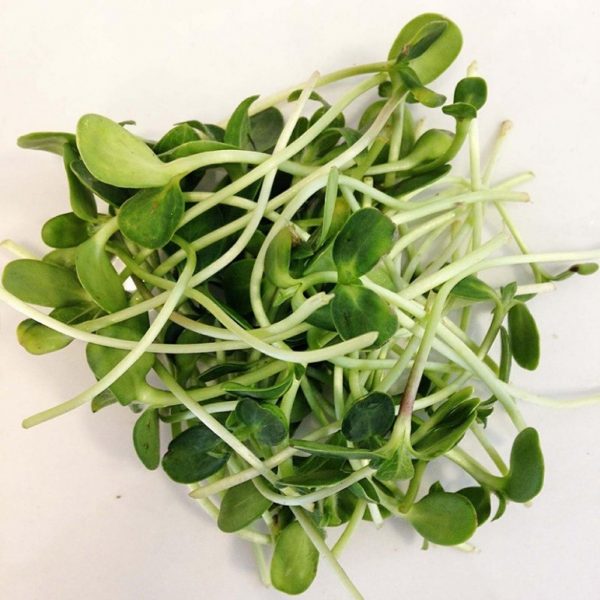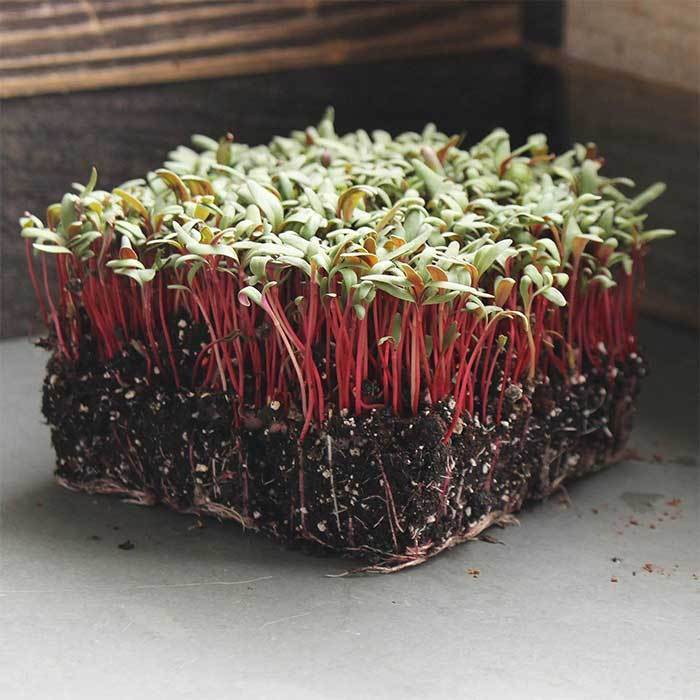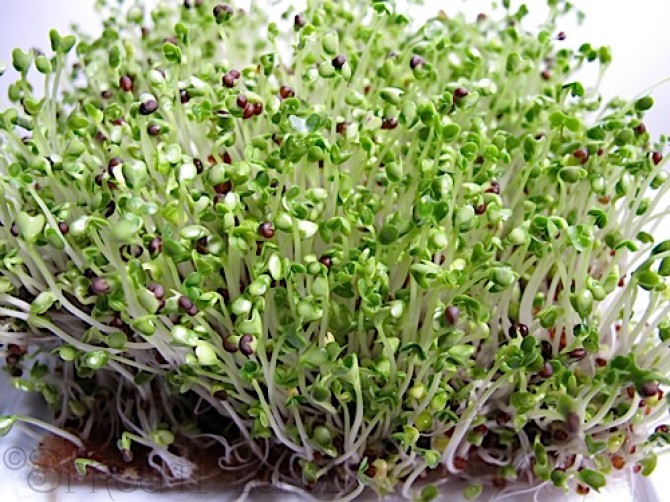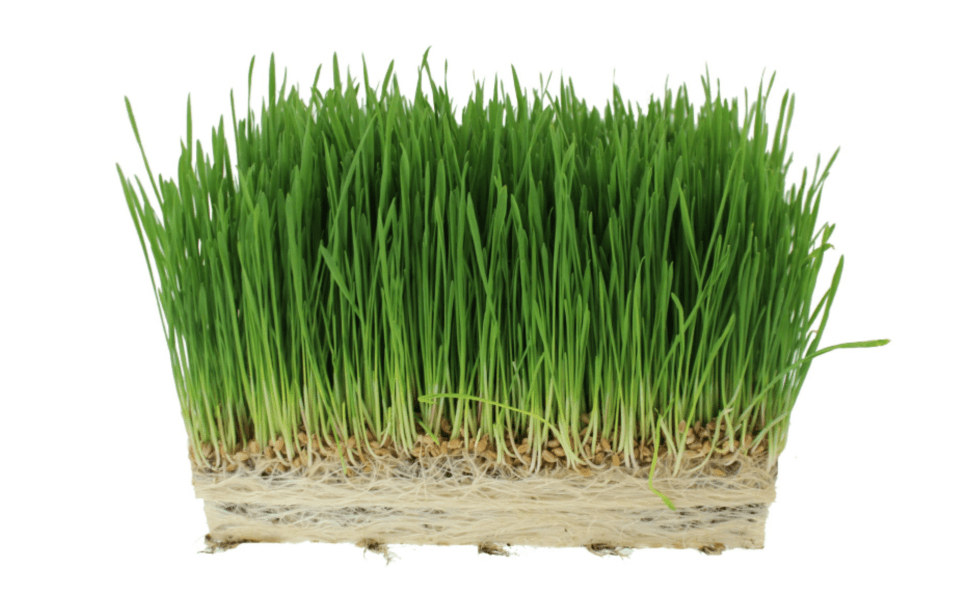Our Microgreens
Microgreens Health Benefit BookletAmaranth
About this microgreen:
Amaranth was cultivated by Aztecs and other cultures from tropical climates. It is actually an ancient kind of grain used in India. Very easy to digest, Amaranth microgreens are available in different colors, from light green to pink or dark red. They are fragile shoots that enhances beautifully any meal with color and a light sweet taste. Amaranth contains high complete protein amounts with vital amino acids, in contrast with other protein sources. Amaranth is gluten-free. Amaranth microgreens also contain vitamin A, C, E, folate, iron, magnesium, phosphorus, potassium, dietary fiber, calcium, amino acids, antioxidants, minerals and essential lysine.
Health Benefits of Amaranth:
Antioxidant
Activates digestion
Helps in cancer treatment
Boosts the immune system
Helps in treatment of cardiovascular disease and hypertension
Decreases hair loss and greying
Helps metabolize fatty acids into energy
Protects from Osteoporosis
Works as an appetite suppressant
Improves eyesight
Improves recovery from illness
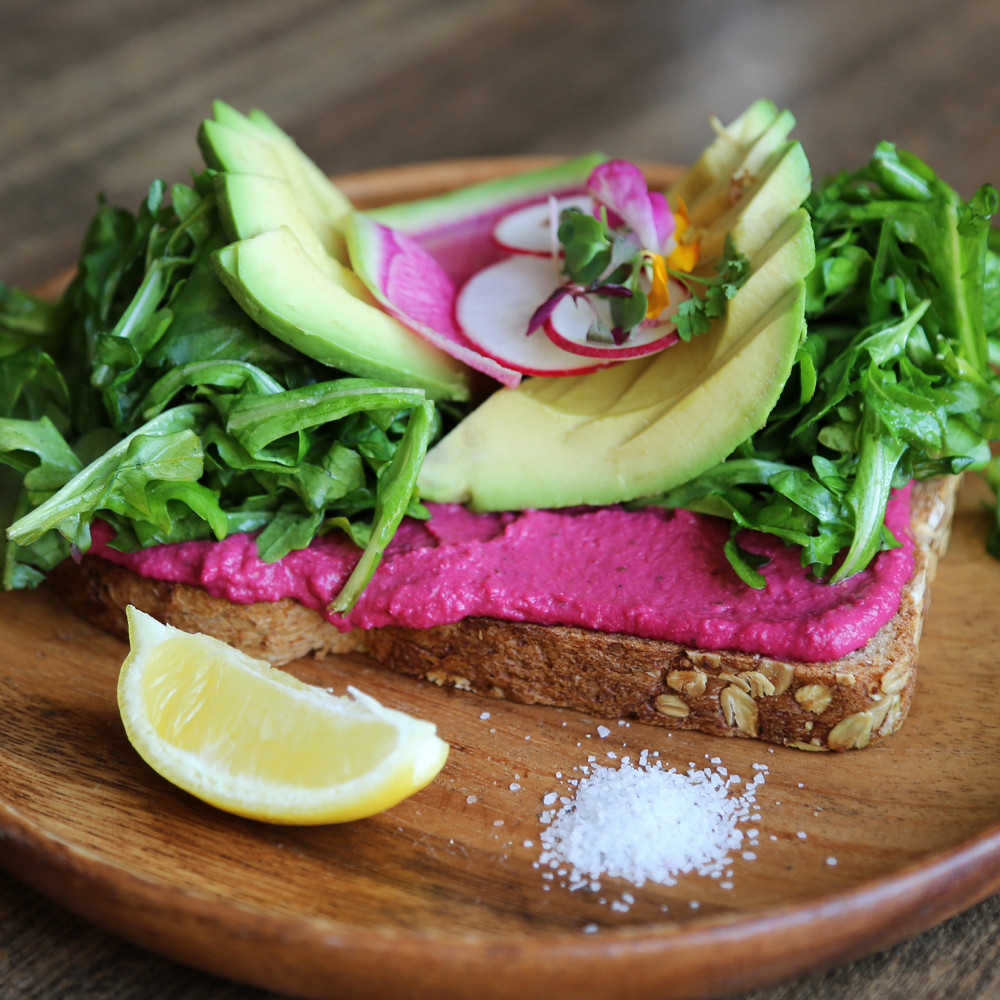
Arugula
About this microgreen:
Considered as one of the most useful and healthiest natural superfood, this plant adds a health supplement to a variety of menus. Arugula is also known as rocket. The Arugula microgreen is flavorful with a peppery taste. The leaf is similar to the oak leaf. It is a great source of folic acid, iron, copper and a variety of minerals and vitamins A, C and K.
Health Benefits of Arugula:
Boost for bone and brain health
Detoxifying food
Reduce risk of cancer
Boosts healthy bones
Antioxidant
Improves eyesight
Good for healthy skin
Improves mineral absorption
Helps keep body hydrated
Activates the immune system
Beneficial for weight management
Natural aphrodisiac
Lowers blood pressure
Protects the aging brain and cognitive decline
Reduces the amount of oxygen needed during exercise & enhances athletic performance
Basil
About this microgreen:
Basil is a common aromatic herb in the mint family, the same plant family as other nutrientdense, beneficial herbs, including mint, oregano and rosemary. The taste is sweet, but savory, and just like the smell, it is peppery, yet ever so slightly minty. Basil, of course, is used to add flavor to a variety of recipes, but what may surprise you is the many benefits of basil that make it well-known for its immunity-enhancing properties and is one of the most important medical herbs known today. Basil has vitamin A, K, C and manganese.
Health Benefits of Basil:
Contains disease-fighting antioxidants
Anti-inflammatory
Fights cancer
Antibacterial Properties
Antimicrobial Properties that fight viruses and infections
Combats stress
Fights depression
Promotes cardiovascular health
Supports liver function and helps detoxify the body
Helps alkalize the body and improves digestion
Acts as a natural aphrodisiac
Protects from diabetes and metabolic syndrome
Beets
About this microgreen:
Beets are from the same family as chard and spinach. Beets have so many benefits that it would be a shame not to incorporate them to your daily food diet. Beets provide a well-being sensation while reducing stress. Beets micro-greens have a slight sweet flavor and bring a colorful touch with its bright red stem and the contrasting darker green leaves. Beets are low in fat, rich in fiber, iron, nitrate, folic acid, minerals, and vitamins. Beets are also charged with powerful antioxidants. Promotes muscle oxygenation while exercising, which has the potential to reduce fatigue and raise the energy level and increase tolerance to endurance training. The pectin contained in beets help remove toxins and heavy metals from the body.
Health Benefits of Beets:
Detoxifing and Healing power
Anti-stress
Powerful antioxidant
Increases immune function
Help protects against heart disease
Slows aging
Stroke Prevention
Reduces frequency of migraine headaches
Prevents alopecia
Alleviates premenstrual syndrom (PMS)
Alleviates hypertension
Borage
About this microgreen:
Borage is a very flow-calorie culinary herb, which found its usage in the Mediterranean countries. Borage microgreens are unique in that they have tiny hairs on the surface of the stem. The stems and leaves vary from light green to green. The flavor is similar to cucumbers with a cantaloupe aftertaste. Borage microgreens add flavor profiles to salads, soups, and sandwiches. Borage microgreens are quite juice and are used to flavor salads, sandwiches, and smoothies. If allowed along with parsley, chervil, chives, watercress, sorrel, and sala burnet in the preparation of Traditional German green sauce. The fresh herb can also be added to sausages, pizza, and poultry stuffing. Borage tea is a popular refreshing drink in European countries.
Health Benefits of Borage:
Detoxifing and Healing power
Maintains blood pressure
Powerful antioxidant
Increases immune function
Stroke Prevention
Reduces frequency of migraine headaches
Protects from lung and oral cavity cancers
Cantaloupe
About this microgreen:
Cantaloupe is also called mush melons, muskmelons, Persian melons and rock melons which belong to the family Cucurbitaceae that includes watermelons and honeydew. It is widely grown in Europe and California. It weighs down from 500 g to 5 Kg (1 to 10 pounds). The seeds of Cantaloupe possess 30 to 35% of protein, 40-45% of fat, 8-10% of carbohydrate and minerals as well as fibers. It possesses omega-3 fatty acids such as oleic acid and linoleic acid. It also possesses the micronutrients such as potassium, selenium, zinc and copper. Cantaloupe seeds also contain high content of fat soluble vitamin E such as tocopherol.
Health Benefits of Cantaloupe:
Cantaloupe is a rich food source of vitamins A and C.
Detoxifing and Healing power
Maintains blood pressure
Powerful antioxidant
Increases immune function
Stroke Prevention
Reduces frequency of migraine headaches
prevents constipation
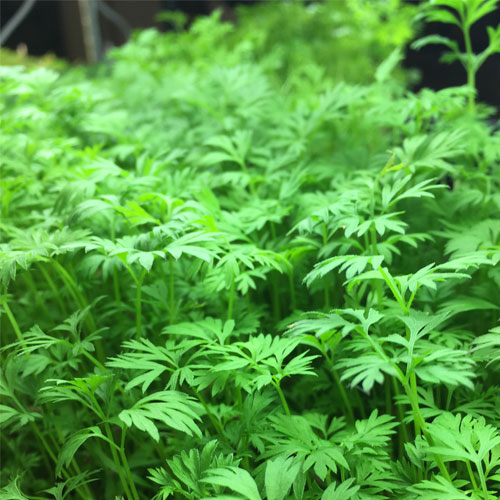
Carrot
About this microgreen:
Carrots, botanically classified as Daucus carota subs. sativus, are slender, edible, underground taproots that grow frilly leaves in a rosette pattern and belong to the Apiaceae family along with celery, parsnips, and parsley. Labeled as a root vegetable, there are many different varieties of Carrots found in a wide array of colors that are harvested at multiple stages of maturity for commercial sale.
Carrots have been cultivated since ancient times and were deeply rooted in the diets and traditional medicine of Asian and European cultures. Despite our familiarity today with the bright orange variety, orange carrots did not arrive into the commercial marketplace until the 16th and 17th centuries. Carrots are an excellent source of vitamin A, which can help prevent vision loss, vitamin C to protect the body from sickness, and fiber to assist with digestion. The roots also contain some vitamin K, magnesium, calcium, folate, and potassium.
Health Benefits of Corn:
Improves bone strength
Boost immune system
Regulates blood sugar
Prevents macular degeneration
Reduces stroke
Reduces risk of cancer
Recommended for a healthy skin
Prevents heart disease
Reduces high blood pressure
Maintains good digestive health
Improves kidney function
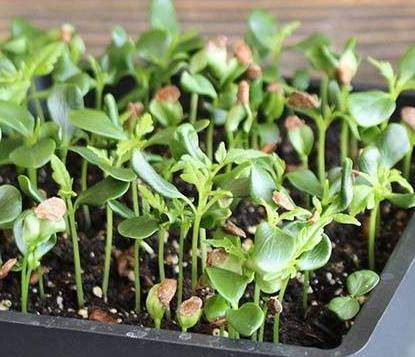
Chinese Mahogany
About this microgreen:
Chinese toon is a popular aromatic garnish microgreen in Asian dishes. It’s tender, has a unique aroma and appetizing flavor that resembles the onion. Chinese toon is a perennial hardwood, which is a member of the Meliaceae family. Chinese toon microgreens are a nutritional, healthy gourmet vegetable and are more popular in China.
Prominent in Chinese culture, the Toona sinensis has been recognized for its medicinal purposes. In Chinese, the tree is also often mentioned to symbolically represent the father in Chinese poetry and literature.
Health Benefits of Corn:
Body repair
Reduces cancer risk
Bone health
Used in China to medicinally treat: diarrhea, chronic dysentery, flatulence, bloody stools, seminal emissions, leucorrhea, metrorrhagia and gonorrhea.
Recommended for a healthy skin
Increases semen quality for men

Chives
About this microgreen:
Chives are nutrient powerhouses that have numerous anti-inflammatory and antioxidant properties as well as a collection of vitamins.
A member of the Amaryllidaceae family which includes other plants such as garlic, onion, and leek, chives are rich in potassium, iron, calcium, vitamins A, B, C, and E, magnesium, zinc, and phosphorus.
Health Benefits of Chives:
Improves bone strength
Lowers bad cholesterol
Decreases blood clots
Boosts the immune system
Recommended for a healthy skin
Help maintain good vision
Strengthen immune system
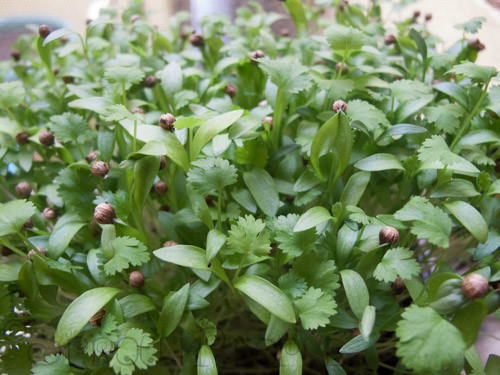
Cilantro
About this microgreen:
The cilantro microgreen has a sweet, bright aroma and is quite bold. In contrast to full size cilantro, micro cilantro is slightly peppery and has a little bit of grassiness. It also smells much different than mature cilantro and doesn’t have the musty smell that many people dislike. Micro Cilantro pairs well with avocado, carrots, zucchini, tomato, coconut milk, citrus, ginger, mint, lemongrass, chile peppers, yogurt, chicken, lamb, and white fish.
Health Benefits of Corn:
Improves bone strength
Help control diabetes
Helps prevent anemia
Antioxidant
Contributes to aid in digestion
Boosts the immune system
Recommended for a healthy skin
Lowers blood sugar
Prevents constipation
Helps protect memory
Lowers risk of colon cancer
Mood enhancer

Cress
About this microgreen:
Cress is a very nutritious microgreen with great revitalizing power recognized for hundreds of years. Cresson seeds were discovered in the tombs of Egyptian pharaohs. Cress is widely used in India and Europe. This culinary and healing microgreen has a tangy, peppery taste similar to mustard. It is recommended to consume this microgreen fresh or in juices to preserve its beneficial properties.
This is an excellent source of carotene, manganese, copper, iron, fiber, calcium, vitamins B1, B2, B6, C and E. Also contains more sulfur and sodium that most vegetables
Health Benefits of Cress:
Antioxidant
Improves memory and mental functions
Developes bone and teeth health
Improves fertility and sexual energy
Helps prevent cancer
Prevents high blood pressure
Boosts the immune system
Promotes better digestion
Prevent anemia and scurvy
Helps stop toothache
Beneficial for maintaining healthy skin
Minimize eczema
Lowers sugar levels
Improves eyesight
Dandelion
About this microgreen:
Dandelions are often thought of as a pesky weed in an otherwise perfectly-maintained yard. But have you ever considered eating them? According to the U.S. Department of Agriculture, Dandelion greens rank high on the nutritional barometer, surpassing both spinach and broccoli in nutritional value. Dandelion greens are rich in Vitamin C, K, and A, as well as omega-3 and omega-6 fatty acids, and protein.
Dandelion microgreens are full of potent antioxidants, which may explain why this plant has such broad applications for health.
Health Benefits of dandelion:
Beneficial for liver function
Improves bone health
Supports eyesight
Promotes healthy skin
Supports strong teeth
Boosts digestion
Reduces swelling
Stops Infectious disease
Regulates muscle
Prevents osteoporosis
Dill
About this microgreen:
Dill is packed with micronutrients that provide health benefits. For example, a 100-gram serving of dill boosts your vitamin A intake. Vitamin A is a fat-soluble vitamin that helps you to maintain healthy vision, skin, immune function, growth, and reproductive health. You’ll also get a significant boost of vitamin C, an important antioxidant that helps your body to resist infection. Dill is also a good source of fiber, folate (important for cell division and production of DNA), calcium for healthy bones, riboflavin for cell function and development, manganese.
Health Benefits of dill:
Used to treat Gastrointestinal disorders
Appetite stimulant
Prevents Kidney disease
Stops Flatulence
Alleviates hemorrhoids
Boosts Immunity
Treats Bronchitis
Stops Infectious disease
Relieves liver and gallbladder complaints
Prevents urinary tract disorders
Helps with insomnia and other sleep disorders
Heartbeats (radish)
About this microgreen:
This is a mix of 6 different varieties of radish microgreens. Each variety has its own level of spiciness and color scheme making this combo beautiful as in “Hot”!
Health Benefits of Radish:
Natural diuretic
Anti-fungal and anti-bacterial
Detoxifying food
Has anti-inflammatory properties
Helps prevent lungs cancer
Recommended in jaundice treatment
Contributes to purifying the blood
Beneficial for weight management
Proven to be beneficial in urinary disorders
Helps with constipation
Helps cleanse the body
Soothes the digestive system
Relieves congestion, good for allergies, infections or colds
lettuce
About this microgreen:
By comparing to USDA National Nutrient Databases, microgreens showed a higher level (up to 69 times) of nutrients than its mature counterpart. In particular for lettuce microgreens, it’s found 9x more minerals than in the mature lettuce.
Also for lettuce, the 7-day old lettuce microgreens had found the highest concentration of phenolic compounds and antioxidants level than the rest of growth stages, which potentially implies a big role in cancer prevention
Health Benefits of Mustard:
Improves muscle strength
Anti- Inflammatory
Fights cancer
Fights anemia
Improves bone health
Promotes vision
Enhances weightloss
Boosts Immunity
Strengthens eyesight
Enhances weight loss
Protects heart disease
Promotes brain health
lettuce mixes
About this microgreen:
By comparing to USDA National Nutrient Databases, microgreens showed a higher level (up to 69 times) of nutrients than its mature counterpart. In particular for lettuce microgreens, it’s found 9x more minerals than in the mature lettuce.
Also for lettuce, the 7-day old lettuce microgreens had found the highest concentration of phenolic compounds and antioxidants level than the rest of growth stages, which potentially implies a big role in cancer prevention
Health Benefits of Mustard:
Improves muscle strength
Anti- Inflammatory
Fights cancer
Fights anemia
Improves bone health
Promotes vision
Enhances weightloss
Boosts Immunity
Strengthens eyesight
Enhances weight loss
Protects heart disease
Promotes brain health
Marigold
About this microgreen:
Another somewhat unexpected microgreen- Marigold! A good source of beta-carotene, which is an antioxidant that is used in the body to produce vitamin A, this microgreen is a deliciously flavored addition to your diet. The leaves also provide potassium, which can help regulate fluid levels within the body and contain manganese, calcium, vitamin K, and zinc.
In addition to vitamins and minerals, Marigold contains proline, which is an amino acid that contributes to strengthening joints and increasing collagen production.
Mustard
About this microgreen:
Mustard is the second most popular spice that is traded around the world. Mustard microgreens are a storehouse for many phyto-nutrients that have health promotional and disease prevention properties. Over the years, mustard has been imbued with curative powers. Mustard microgreens are tender, succulent and spicy. Many variety add different sharp flavors to a wide range of meals. They are very popular in Asian mix. Eating mustard microgreens offers a plateful of benefits. The mustard microgreen is a good source of vitamin A, C, E, energy and carbohydrates, proteins, dietary fiber, folate, niacin, riboflavin, thiamin, sodium, potassium, calcium, copper, iron, magnesium, manganese and zinc.
Health Benefits of Mustard:
Digestive aid
Relieves congestion, good for allergies, infections or colds
Inhibits growth of cancer cells
Helps provide relief to rheumatic arthritis
Reduces occurrence of migraine
Helps prevent diseases
Treats fever
Prevents cancer risk
Assists in menopause relief
Contributes in asthma prevention
Slows aging
Helps fight infections
Stimulates hair growth and strength
Contribute to relieve muscle pains
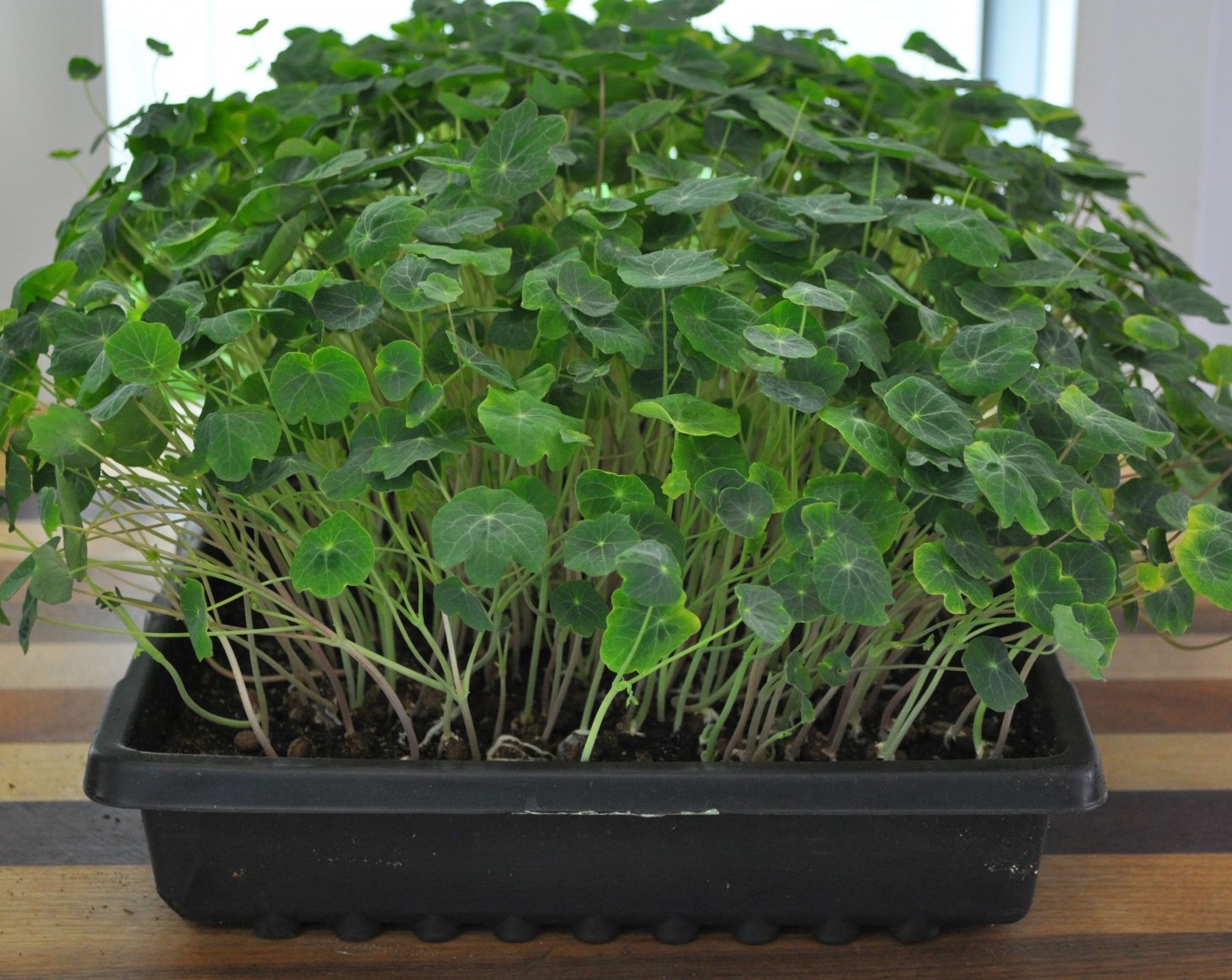
Nasturtium
About this microgreen:
The name “nasturtium” comes from the Latin words for nose (nas), and tortum (twist), which essentially translates to “twisted nose.” Many believe it was named for the reaction on a person’s face after biting into the peppery, bittersweet leaves. In addition, a unique trait of Nasturtium leaves is that they are superhydrophobic, meaning the leaves contain waxy nanostructures that prevent water from absorbing through the top of the leaf. This process also cleans the leaf because as the water drops off, it removes dirt and debris allowing the leaf to have a clean surface to continue photosynthesis. Nasturtium leaves are an excellent source of vitamins A, C, and D, beta-carotene, iron, manganese, and flavonoids.
Health Benefits of Peas:
Natural Antibiotic
Promotes Kidney Health
Fights infection in bladder
Prevents Tumors
Boost Immunity
Natural expectorant & disinfectant
Anti- fungicide
Treats scurvy
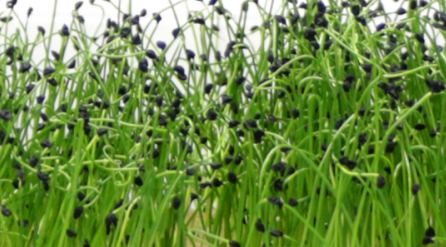
onion
About this microgreen:
Under the same family of Allium, onion seedlings look very much like the chives and leek. Onion seeds are dark in color, and the shoot grows up with the seed hulls still attached. Onion microgreens taste pretty much like the full-grown onion, but milder.
Health Benefits of Onion:
Improves bone health
Recommended for healthy skin
Supports eyesight
Supports the strong teeth and bones
Enhance the immune system
Contributes to regulate blood sugar level
Prevents arthritis
Reduces bad cholesterol
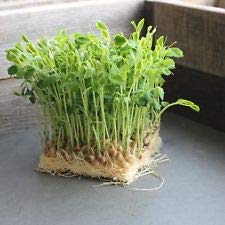
Peas
About this microgreen:
Peas are a powerhouse of nutrition and strong anti-oxidants. Peas have such high-quality protein that they are now added to many meals and commercial protein products. In taste, pea tendril microgreens are slightly sweet, with a mild bitter aftertaste, and they have a nutty undertone. The leaves have a texture similar to spinach, although not as delicate. Pea tendrils add freshness and a little crunch to dishes with rich and earthy flavors. Peas microgreens are low fat but high everything else. They contain protein, fiber, omega-3 and micronutrients. Rich in folate, carbohydrates, vitamin A, C, E, B1, B2, B3, B6.
Health Benefits of Peas:
Antioxidant
Helps prevent stomach cancer
Slows aging
Prevents wrinkles
Enhance the immune system
Helps protect from Alzheimer
Protects from Osteoporosis
Relieves constipation
Contributes to regulate blood sugar level
Prevents arthritis
Reduces bad cholesterol
Beneficial for weight management
Helps keep bones healthy
Has anti-inflammatory properties
Reaching Wellness
(Broccoli)
About this microgreen:
Enjoy the mild, and deliciously nutty flavor of our Broccoli Di Cicco, Ramoso Santana and our Waltham 29 combination. This combo brings a massive amount of nutrition to your diet.
Health Benefits of Broccoli:
Detoxifing and Healing power
Reduces Cancer Risk
Powerful antioxidant
Increases immune function
Help protects against heart disease
Slows aging
Protects against dementia
Reduces frequency of migraine headaches
Improves Eyesight
Minimizes premenstrual syndrom (PMS)
Alleviates inflammation
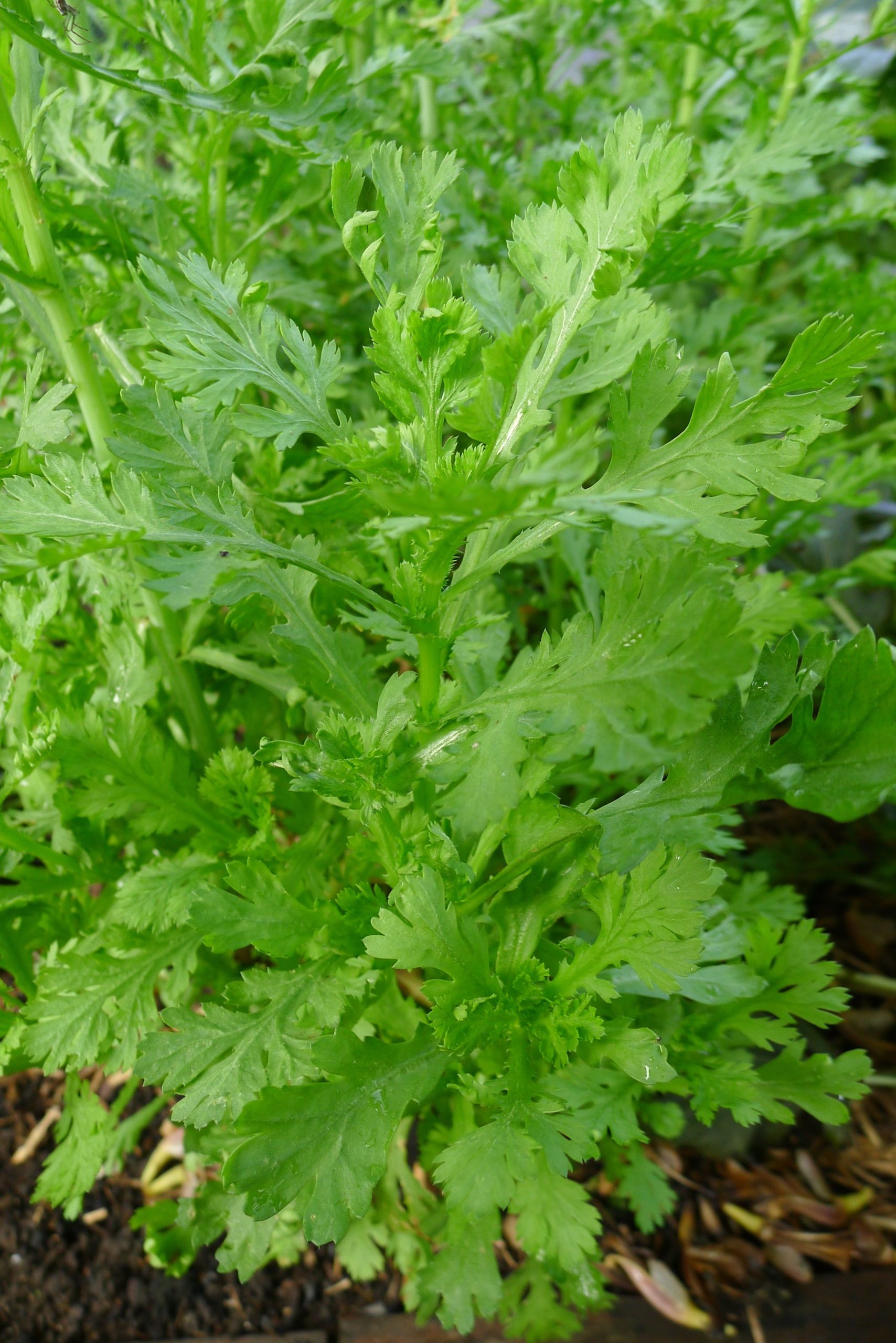
Shungiku
About this microgreen:
Shungiku can be grown as an edible flower, salad greens, or especially as a microgreen. As a micro, it has thin serrated true leaves. This light green, pretty micro has a slightly crunchy texture with a strong carrot, fruit, flowery flavor that also has a mild but pleasant bitterness.
Great as an addition to mixed salad greens. Contains Vitamin A, Vitamin C, Vitamin E, Vitamin K, B12, And B6.
Shungiku, also known to be the edible chrysanthemum, is another Asian herb microgreen that has a delightful floral flavor with a slight bitter taste. This beautiful microgreen is short, has a thin serrated leaf, and light green in color. Shungiku is mild, crisp and crunchy, and can be a great complement for any salad mix.
Improves eyesight
Maintains good digestive health
Improves skin
Lowers the risk of cancer
Diabetes management
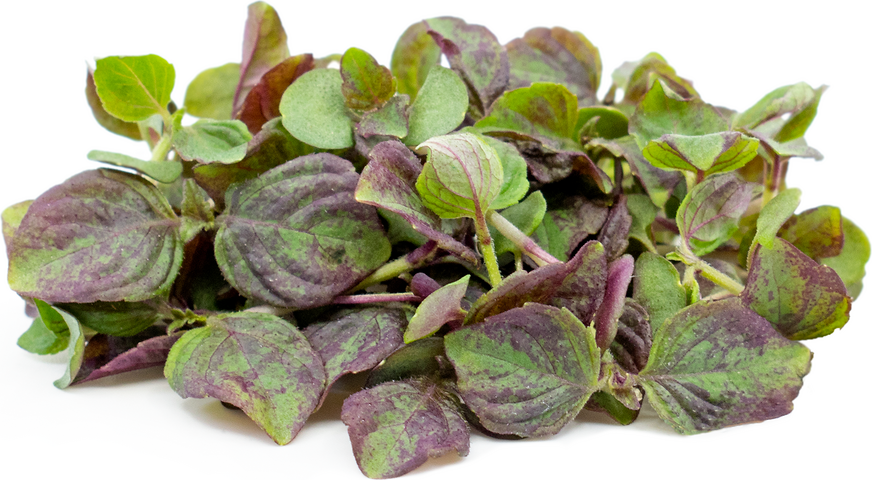
Shiso
About this microgreen:
Shiso, also known as Japanese basil or beefsteak plant, is a popular bush plant in Asian countries. It has a delightful aroma, anise-like flavor, and complements well with fish.
They are popularly used in Japanese cuisine as they offer a subtle flavor and tender texture, and can be used to garnish sushi or sashimi, sprinkled over miso soup or soba noodles, wrapped around meat, mixed in with tofu or bean curd dishes, added to stir-fries, or even steeped in green tea.
Shiso contains calcium, phosphorus, iron, potassium, antioxidants, and vitamins A, C, and K.
Health Benefits of Salad:
Detoxifies the body
Cancer prevention
Regeneration of the immune system
Sprouting Lakeland
(KALE)
About this microgreen:
We offer you the twisted tale of three kales. Enjoy the mildly sweet flavor of our light-colored Green Kale, and strong earthy flavor of white kale, combined with the robust kale flavor of our Red Kale. Simply delicious!
Health Benefits of Mustard:
Lowers blood pressure
Anti- Inflammatory
Anti- viral
Anti- depressant
Reduces cancer effects
Lowers cholesterol
Bone health
Boosts Immunity
Strengthens eyesight
Enhances weight loss
Protects heart disease
Clots blood
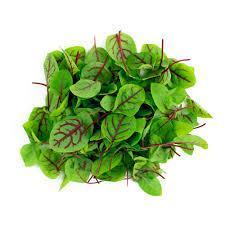
Sorrel
About this microgreen:
Sorrel micros are known for its delightful and strong lemony tang. It’s commonly used as a micro herb, garnish, or to give a dash of lemon zest to a salad! Sorrel is a lovely accompaniment to seafood and mild-flavored meats like poultry, and can add a nice zing to any smoothie or salad!
A good source of Vitamin K, Vitamin C, oxalic acid, and Vitamin E, sorrel is a perennial herb that belongs in the knotweed family along with rhubarb and buckwheat. The term “knotweed” stems from the little nodes the stems of some of the family’s species have.
Sorrel grows in grassland habitats all over Europe and in parts of Central Asia, though its history goes back as far as 1700 with mentions of the sour herb in Jamaican literature.
Health Benefits of Salad:
Detoxifies the body
Improves eyesight
Regeneration of the immune system
Sunflower
About this microgreen:
Sunflower microgreens offer one of the most balanced forms of a complete plant protein around. It is one of the best food to add to your diet for overall health and wellbeing. It has a strong stem and green leaves. The taste is fresh and crunchy. Delicious eaten as a snack or in any salad, sandwich, wrap or culinary creation. Sunflower microgreens are low in calories and high in nutrition, making them ideal for any natural and healthy fat loss program. They are a great source of valuable nutrients including proteins, enzymes, folic acid, selenium, lecithin, minerals, including calcium, copper, iron, magnesium, potassium, phosphorous, zinc as well as vitamins A, C, Complex D and E.
Health Benefits of Sunflower:
Contains lecithin which helps break down fatty acids
Activates cells in the immune system
Helps build skeletal, muscular, and neurological systems
Boosts your fertility
Aids in stress relief
Helps eliminate accumulated cholesterol in arterial walls
Improves regeneration of blood supply
Revitalizes tissues
Calms inflammation
Activates deodorizing the body
Natural expectorant
Antioxidant
Helps prevent heart disease
Swiss chard
About this microgreen:
Swiss chard is from the same family as beets. It is available in many varieties that offers a range of colorful stalk like red, white, pink, yellow and orange. The leafy part is always green. The eye-catching colors and beautiful delicate texture of this microgreen makes it one of the most appealing meal garnishing assets. Swiss chard microgreen is also commonly used in sandwiches, wraps and smoothies.
These microgreens have exceptional effects in promoting health. Because of their higher proteins as well as their mineral content, they offer resistance against a number of illnesses and diseases.
The Swiss chard microgreens have a distinctive mild, juicy as well as salty taste that reminds us of the flavor of beets with a mix of spinach.
Low in fat. Rich beta-carotene, vitamin E, K &C, zinc, copper, sodium, potassium, iron, manganese, phosphorus, lutein and several other illnesses battling antioxidants. Also, a high level of Calcium, Magnesium and vitamin K contributes in good bone health.
Health Benefits of Swiss Chard:
Powerful antioxidant
Assists in regulation of blood sugar level
Helps strengthen bones
Prevents cancer
Boost mental function and concentration
Contributes in healthy blood
Prevents anemia
Encourages hair growth and strength
Encourages hair growth and strength
Promotes good eye health
Beneficial for weight loss
Helps in control of blood pressure
Turnip
About this microgreen:
Turnip microgreen are an excellent source of vitamin K, vitamin A (in the form of betacarotene), vitamin C, folate, copper, manganese, dietary fiber, calcium, vitamin E and vitamin B6. They are a very good source of potassium, magnesium, pantothenic acid, vitamin B2, iron and phosphorus. Additionally, they are a good source of vitamin B1, omega-3 fatty acids, niacin and protein.
Health Benefits of Wheat Grass:
Antioxidant
Anti- cancer activities
Maintains healthy skin
Prevents retinal detachment
Prevents against mascular degeneration
Promotes bone health
Treatment for alzheimer’s disease
Promotes weight loss
Improves iron absorption
Lung health
Prevents excess bleeding
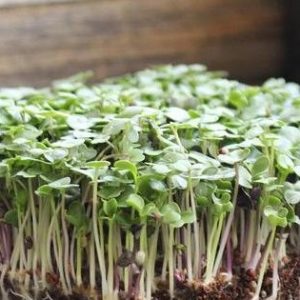
Vitality Blend
About this microgreen:
A blend of at least four nutrient-dense microgreens from the brassica family considered vegetable royalty. Excellent as a salad and in all your favorite dishes.
Health Benefits of Salad:
Detoxifies the body
Cancer prevention
Regeneration of the immune system
wheat grass
About this microgreen:
About this microgreen:
Wheatgrass may appear like a simple grass, but it is actually among the most powerful natural detoxifying agents, since it is one of Nature’s richest source of chlorophyll and live enzymes. In fact, it has been said that one ounce of wheatgrass is equivalent in nutritional value to more than 2 pounds of leafy green vegetables. From diminishing the appetite, to reducing body odors and preventing cancer, wheatgrass has a place in your diet.
Wheatgrass contains more than 90 minerals, including potassium, calcium, magnesium and sodium as well as essential enzymes and 19 amino acids.
Health Benefits of Wheat Grass:
Diminishes appetite
Stimpulates circulation
Improves digestion
Alleviates arthritis
Treats skin wounds
Helps in acne treatment
Prevents cancer
Boost immunity
Natural expectorant
Antioxidant
Helps prevent heart disease
START YOUR MICROGREEN SUBSCRIPTION
There are three different subscription options for each microgreen type. Browse for the perfect subscription for you!

